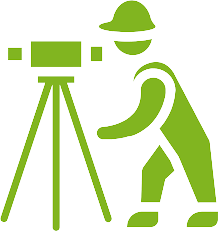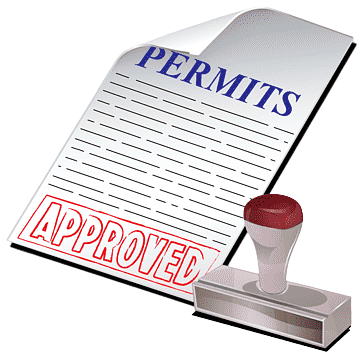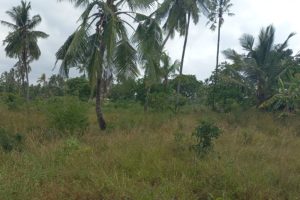
by Georole Ltd | May 6, 2023 | land survey
Are you aware what a land surveyor does or what land surveying is? Basically, surveying is the technique, professions, art and science of determining the terrestrial or three-dimensional position of a point and the distances and angles that are measured between them. This technique is used in order to establish the size of a plot of land and the buildability of it.
A land surveyor is an individual with the important task of verifying property lines so that you don’t build anything where you are not allowed to. To make these verifications, surveyors go out into the field to search for original property markers on the land (these are usually underground and contain details about who originally surveyed the land).
Land surveyors also do a lot of measurements and calculations around the property and the neighborhood. Plus, they search for and review city, county and state property records.
There are many reasons why you would need a land surveyor and below are a few examples:
- When purchasing or selling land

- Prior to building a structure
- Resolving a boundary dispute
- Verifying a tax assessment
As you can see, the list of reasons why you need a land survey can be endless. Therefore, hiring a land surveyor is one of the first steps you should take when buying land or building a structure on your property. Look no further than Georole Surveying Team, Inc. for all of your land surveying needs.
conclusion
Land survey is a professional drawing that identifies property boundaries and provides the location of any structures located on the property. Land surveys are extremely important and a necessity for any land owner or prospective land owner. The land survey drawing will depict all corners of the property and will be marked on the property by a licensed land surveyor. You will use the drawing document and physical markers on the property to establish your property lines or building site.

by Georole Ltd | May 6, 2023 | land survey
Homebuyers may need to get a property survey before they close on their new place because when buying a home, there’s a certain amount of work required in between having your offer accepted and actually moving in.
The reason why property surveys may be necessary is to determine and confirm land boundaries. Examples would be the parcel of land a home sits on, and any sub-surface improvements, like a septic tank or well. They also identify other types of restrictions and conditions that apply to the legal description of a property.
This kind of survey will probably be needed whether you’re buying a new home or building an addition onto a property you already own.
what is property survey?
A property survey is all about defining what belongs to you and what doesn’t. This survey is conducted to determine or confirm land boundaries that are already established. For example, if a developer consider to put up a fence, he/she will need and want to know exactly where his/her property ends and their neighbor’s begins.
This survey also identify other types of restrictions and conditions that apply to the legal description of a property, including easements or encroachments.That’s what a property survey will help you determine. Surveys detail how your property is defined in an official, legal capacity. Instead of guessing where your property lines are, you have a document that has it detailed for you.
Just incase you will need a property survey, do not hestate to contact georole surveyors


by Georole Ltd | Apr 25, 2023 | physical and land use planning
A planning appraisal is an assessment of the development potential of a site based on planning policy and other considerations.
Reasons why should carry out a planning appraisal
A planning appraisal may be carried out for a number of reasons including but not limited to:
- To assess whether a site is suitable for a specific development, or to identify alternative development options for a site in which you have an interest
- To establish the site-specific opportunities and constraints which will affect your decision-making process
- To distinguish between immediate and longer-term potential
- To identify additional information which may be needed for a final decision on whether to proceed
The appraisal should, as a matter of routine, cover site characteristics, planning history and relevant planning policy.
However, the key skill is to interpret this information. The following questions should provide a useful starting point.
Some Questions to Answer
- Is the proposal in accordance with the Development Plan, considering not only individual policies but the overall direction of the Plan?
- Should Local Plan policies be given reduced weight due to:
- Passage of time
- Changes in circumstances at the site
- Conflict with National Planning Policy Framework
- Current evidence of supply and demand for different types of land use
- Are there material considerations which would outweigh any policy conflict?
- Are there relevant permitted development rights available?
- Is site-specific evidence needed to support your case? (e.g. viability assessment)
- What opportunities and constraints arise from the site characteristics and what will their impact be on development capacity?
- How likely are current constraints to change with time? (e.g. regeneration initiatives which may improve viability, provision of new infrastructure)
- Was any refusal tested at appeal, can amendments address previous concerns or have circumstances changed?
The results
This framework provides a starting point, to be adapted to a specific proposal, site or user requirement. The outcome might range from a site being swiftly discounted to the production of a formal report to justify a site acquisition to the company board.
Recommendation

When providing a detailed appraisal, Georole Planning Team undertake research on a number of critical aspects that affect the development potential of a site.
Our experts understand the planning system, having experience assessing and promoting schemes and securing consents. Our expertise covers all types and scales of development. We use this expertise to review planning policy and decisions to advise on the prospects of development.
From this informed position we can advise on the potential development but most importantly the routes to achieving the required permissions. These options can include outline, full planning application and permitted development. This is the planning strategy to deliver the vision for the site.
The matters we cover in our appraisals:
- Existing lawful use
- Constraints
- Designations
- Planning history
- Current planning policy
- Emerging planning policy
- Strategic and national planning policy
- Permitted development
- Consenting options
- Community Infrastructure Levy
- Timescales
- External consultants
Therefore, if you want to call in expert help, you know where to come!

by Georole Ltd | Apr 23, 2023 | land survey
The important key steps to follow in purchasing land includes; land identification, search, sale agreement, transfer, stamping and the registration of the transfer.
Land Identification
The prospective buyer identifies a piece of land that meets their criteria including size, location, soil type among other factors. Are you looking for a land to buy? click here to identify a land of your choice.
Search at the lands registry
- Carry out an official search at the county registry. The search indicates the ownership and status of the land. One needs to have a copy of the title to the land that you intend to do the search.
- You will have to fill a search application form and attach on it single copies of the title deed, ID card and PIN certificate and pay Kshs.500/- at the registry and get an official receipt.
- The search will give you the following information; The registered owner, Its size, Any encumbrances against the land, for instance cautions, caveats. It will further show the title and search numbers, date the search was done, nature of title (freehold/leasehold), approximate area in hectares, name and address of proprietor and whether a title has been issued. A title with any unresolved issues of the above is not transferrable.
- The search results must be signed and sealed by the registrar. If all is clear, then you may proceed to the next step which is writing a sale agreement.
Sale agreement
The purchaser may appoint a lawyer to represent him in the signing of the agreement. The sale agreement is prepared by the seller’s lawyer and it indicates the terms of sale including the names of the buyer and seller, price of the land, mode of payment and documents to be supplied by the seller to facilitate registration of the transfer of land to the buyer.
At this point, the buyer may be required to pay a deposit with the balance payable within 90 days after signing of the sale agreement. After the parties have signed the sale agreement, the document must then be stamped to make it legally binding.
Transfer and procurement of completion documents
- The transfer document is usually prepared by the buyer’s advocate and approved by the seller’s lawyer.
- The seller is supposed to procure the completion documents at his costs, including the: original title deed, 3 copies of transfer of land duly completed by the seller, ID Card, certificate of registration of the seller and PIN certificate, 3 passport size photos of seller (if company, photos of two of its directors) land rent clearance certificate (for leasehold
land) rates clearance certificates, and consent to transfer and valuation form duly completed by the seller.
- The document should also be signed by the buyer who is also required to produce copies of his ID card, PIN certificate and passport photos.
Stamping the transfer
- The buyer then applies for the valuation of the land by the government valuer using valuation form duly completed by the seller. Lands office will use these documents to determine stamp duty payable.
- The stamp duty should be paid to the commissioner of domestic taxes usually through the National Bank or any other appointed bank.
- Once the payment is done, the buyer should lodge the documents at the lands office for stamping with duty.
- Thereafter, the buyer should book the following documents for registration: Title deed; land rent and rates clearance certificates, valuation report, consent to transfer, stamp duty declaration and pay-in-slip.
Registration of the transfer (final of the steps to follow in purchasing land)
This is the last process of the land purchase and it involves the registration of the transfer in favor of the buyer.
“Enjoyed this article? Show your support by buying us a coffee ☕”

by Georole Ltd | Apr 22, 2023 | architectural, physical and land use planning
A building permit or construction permit is an official approval issued by government agency that allows you or your contractor to proceed with a construction or remodelling project on your property. It is intended to ensure that the project plans to comply with local standards for land use, zoning, and construction. These standards are intended to ensure the safety of current and future owners and occupants and to provide enforcement of zoning and land-use policies.
The specific issues that the building permit process may address include structural integrity of the framing work, zoning, sanitation, water, and sewer lines, fire protection, and electrical service.
The following is a list of the nine steps for obtaining a building permit in Kenya:
- Obtain a survey plan from Survey of Kenya
- Obtain a project report (Environmental and Social Impact Assessment) from an environmental expert
- Obtain approval of the environmental impact study from National Environment Management Authority (NEMA)
- Submit and obtain approval of the architectural plans from county government
- Submit and obtain approval of the structural plans
- Obtain stamps on architectural and structural plans from the Nairobi City County – Development Control Section
- Apply for project registration with the National Construction Authority (NCA)
- Receive on-site visits by NCA to check for compliance and obtain invoice
- Submit payment receipt, obtain preliminary compliance certificate and compliance certificate
Obtain a survey plan from Survey of Kenya
- Visit the Survey of Kenya offices in the ministry of land departments to obtain a survey plan. A survey plan from Survey of Kenya is a required document when applying for a building permit.
- Request for Folio Registry number search: You are required to provide proof of land ownership when requesting for the survey plan. One is shown the survey plan to confirm that it is the one they have requested for then issued with a payment authorization slip to go and pay for the survey plan.
- Proceed and pay for Folio Registry number search: You will be required to produce an authorisation of payment for this service. You will be charged Ksh 150 for the numbers search.
- Confirm availability of survey plan and Pay for survey plan: After the search is done and availability confirmed. You are to pay Ksh 650 for the survey plan.
- This process takes one day to complete.
Obtain a project report (Environmental and Social Impact Assessment) from an environmental expert
Once the survey plan has been obtained, a licensed environmental expert must be hired to prepare a project report to be submitted to NEMA.The project report can take a period of 3 to 5 days to complete.
Obtain approval of the environmental impact study from National Environment Management Authority (NEMA)
- Following the enactment of new Environmental Management and Co-ordination Act on February 27, 2009, companies now have to obtain approval of projects from the National Environment Management Authority (NEMA). Projects of all risk categories are subject to approval and an environmental impact assessment (EIA).
- It takes 30 days on average to get the approval. The cost is set at 0.05% of warehouse value, prior to February 11, 2009, the fee rate was 0.1% of warehouse value.
Submit and obtain approval of the architectural plans from county government
Submit architectural plans at the county development control office. The required documents to be submitted are the following:
- The proposed development
- A survey plan from Survey of Kenya
- Up-to-date rates payment receipts
- Structural plans
- Pay for permit fees: The County government will issue an invoice that must be paid, this can take up to 2-3 weeks to be obtained.
- Obtain architectural plans approval notification
- Submit architectural plans for signing
- The drawings are reviewed by all relevant departments simultaneously.
- When all signatures have been obtained, the approved plans are scanned and uploaded in the system so that they can be retrieved by the architect
- Obtain authenticated architectural plans and construction permit
- Building permit fee is based on the size of the building and varies from county to county depending on how its applied. e.g. some counties charge a specific amount per square meter.
Submit and obtain approval of the structural plans
- Visit the county’s development control office and follow the following steps:
- Submit structural plans

- Obtain structural plans approval notification
- Submit structural plans for signing
- Obtain authenticated structural plans
- With approved drawings, construction may start while the application for a building permit is being processed.
- The following documents are to be submitted for approval
- project plans
- architectural drawings
- Location survey of property documents and others.
- It takes approximately one day for approval.
Obtain stamps on architectural and structural plans from the Nairobi City County – Development Control Section
Once the plans have been approved, the architect must submit hard copies of the plans to be stamped by the County Government, even after submitting the documents online. The engineer must also do the same after the architect’s plans have been stamped. The engineer does not have to wait one month like the architect to bring in the hard copies.It takes approximately ten days for approval.
Apply for project registration with the National Construction Authority (NCA)
- The building company then has to register the proposed construction project with the National Construction Authority (NCA) and fill a project registration form providing details of the construction work. The Project registration form Can be downloaded from the NCA website
- It takes around a week to obtain the compliance certificate.
- Upon submission of the application, the building company receives a temporary certificate that testifies the registration is under process.
- The building company submits the project registration form to the authority with several documents listed below.
- Authenticated architectural plans (original)
- Authenticated structural plans (original)
- NEMA approval (Simple copy)
- Bill of quantities (Simple copy)
- contract/agreement (Simple copy) It should be duly signed by both the contractor and the client
- Contractor’s registration certificate (Simple copy)
- Quantity surveyor’s practicing certificate (Simple copy)
- Architect’s practicing certificate (Simple copy)
- Engineer’s practicing certificate (Simple copy)
- The building company will then be issued with an invoice on the amount of levy it should pay the authority at selected bank accounts, which are posted on the NCA website. The levy is 0.5% of the total cost of the project (percentage applicable to projects with a value of over Ksh.5,000,000).
- It takes approximately one day for approval. The approval is done free of charge.
Receive on-site visits by NCA to check for compliance and obtain invoice
- Once the application has been made, there is a site-inspection to check for compliance of the construction site against the approved plans and the NEMA clearance.
- After this site inspection, the applicant will receive an invoice showing the amount to be paid.
Submit payment receipt, obtain preliminary compliance certificate and compliance certificate
- Once payment is made, then a provisional certificate of compliance, valid for 90 days, is given to the applicant. If later, there are no violations of compliance, then the final compliance certificate will be issued
- It takes approximately seven days for approval.
“If you found this article helpful, consider supporting our work to keep creating valuable content.”












